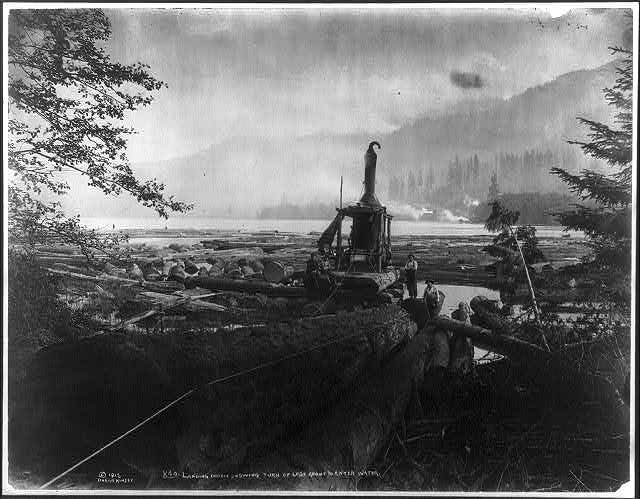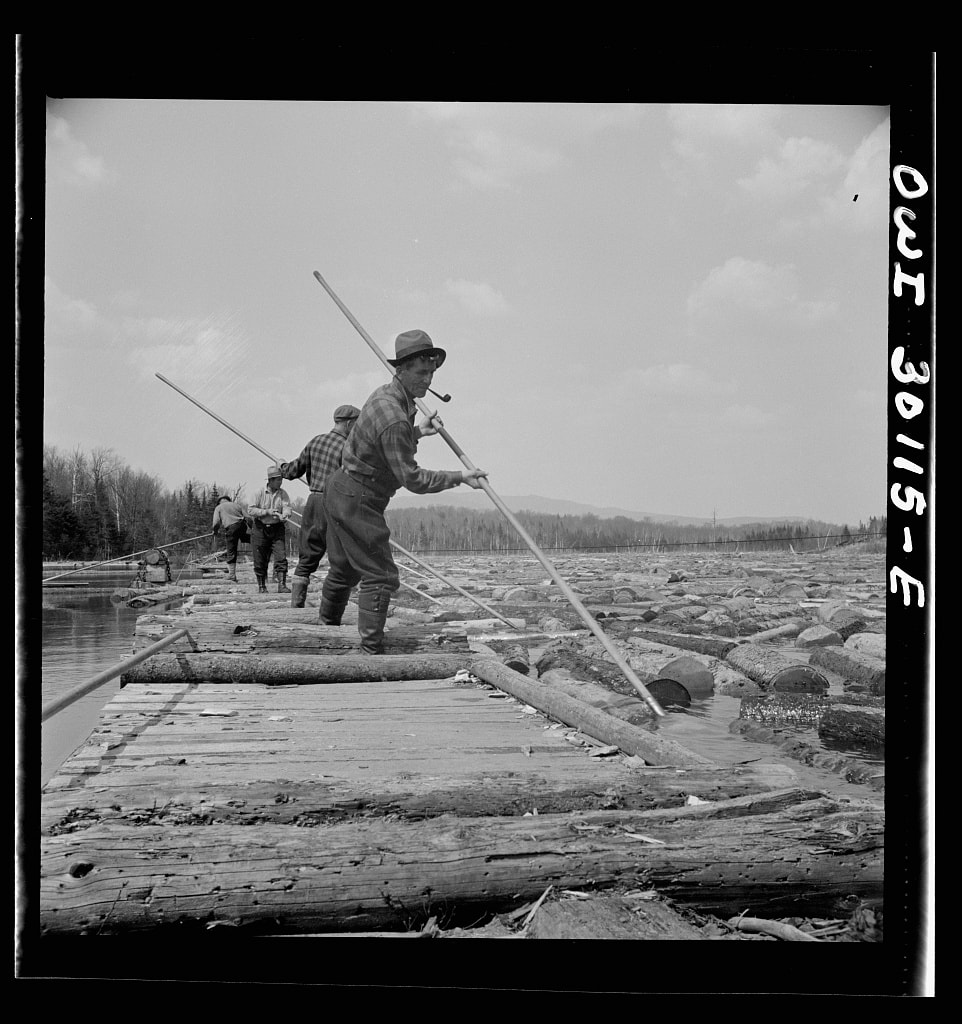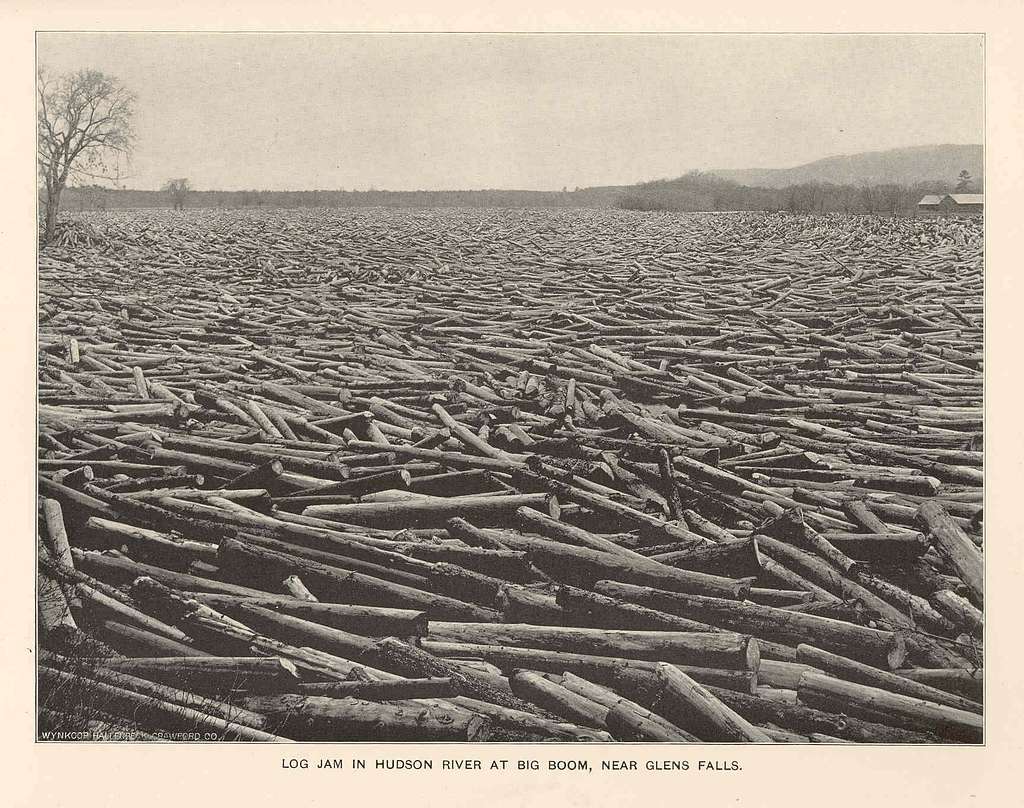From the forthcoming book about the past, present, and future of logging in America...
|
Trees have been our constant companions since before our species evolved. They have given us shelter, shade, materials, and fuel. Trees run through spiritual and religious traditions—there are world trees, wishing trees, trees of life, and trees of knowledge; druids worshipped in sacred groves, Christians decorate trees to celebrate their savior’s birth, the Qur’an says that Muhammed surpassed even the understanding of the angels when he passed beneath the Sidra tul-Muntaha, the tree at the end of the heavens. Across cultures, trees symbolize eternity, wisdom, justice, steadfastness, prosperity, and health. They are our first and best defense against the doomsday scenario of climate change—and they may be our last defense as well. In America, trees loom large in the national mythology: colonists in Connecticut hid their charter in an oak tree, there’s an apocryphal story about George Washington’s cherry tree, the first public reading in the South of the Emancipation Proclamation was held under a live oak in Virginia, schoolchildren may learn a song about Johnny Appleseed, or read that Paul Bunyan combed his beard with a pine tree. Most importantly, trees provide us with wood.
Wood is a nearly perfect material. Pound for pound, it is stronger than steel or concrete, yet it is cheap, plentiful, widely available in most of the world, and easily worked with simple tools—in fact, all of the earliest stone artifacts are woodworking tools. It is sufficiently watertight and durable to build houses and boats, but it is also light and combustible enough to have been humankind’s primary source of fuel for millennia—it is still the primary source of fuel for a quarter of the global population. It flexes enough to make a bow, but it is stiff enough to build a bridge. Ground to a pulp, it can make both a sturdy box for shipping goods and the soft paper that pads those goods within. Kept dry and away from fires, it will last centuries without measurable diminishment of its engineering properties, yet it is readily biodegradable in all but the most extreme environmental conditions. It is, after concrete, the most-used construction material in the world—the world used more than 4.5 billion cubic meters of wood last year, enough to cover the island of Manhattan to a depth of 167 feet, the height of a sixteen-story apartment building. And its use is accelerating: in the next 25 years, wood products are expected to grow between 40 and 60 percent globally, leaving concrete in the dust. More than 90 percent of new homes in the United States are built using stick-frame construction, an American invention that is the world’s most efficient way to build houses at scale. But most important to this story are the people who work with trees and wood. The loggers, sawyers, lumbermen, builders, inventors, carpenters, and traders whose labor built this nation and devoured its woods created a unique and expressive dialect of American English, some of which they passed on to us: Jerk and punk were both slang for entry-level logging jobs. A jack was a man, and you got hijacked when some jack told you to stick your hands up high. Skid row and on the skids both referred to the filthy roads used for sliding logs, haywire was when the dangerous cables used to drag logs got tangled, and pie in the sky was the socialist loggers’ term for bourgeois respectability. These men (and, at times, women) went into our forests and returned with such a great bounty of lumber that, at various times, we have used wood to build sewers, construct aircraft, pave roads, and even weave clothing. Forests were the nation’s oilfields and coal mines before either of those things existed, and the people who figured out how to extract labor from their fellow citizens and capital from the trees wrote the script for every extractive industry that followed. Forest products are one of America's foundational industries. No other industry in our early history was so important to the corporate model of proliferating management positions, vertical integration, and finance-driven strategy. The role of tobacco and cotton in globalizing trade is well known, but lumber was shipped just as widely from our ports—and unlike cotton and tobacco, it still is. The lumber industry gobbled up land as fast as territory could be taken from its Indigenous stewards, running ahead of westward expansion and supplying the towns and cities that followed in its wake. And lumber was a key material in the industries that created the greatest fortunes in American history; it held up every mine shaft and supported every railroad track. Like all industries, it was ravenously hungry for workers. Lumber camps were full of new immigrants, broke farm kids, survivors of childhood trauma, the descendants of enslaved people, and others who were willing to risk their bodies working from before dawn until after dark—“from can’t see ‘till can’t see”—for a stable paycheck and three hearty meals a day. (The average lumberjack consumed 7,000 calories daily and burned at least as many.) Timber workers were also some of America’s most important labor organizers, fighting for safety, time off, and higher wages. In 1869, sawmill workers helped found the Knights of Labor, which birthed the modern union movement. In 1910, a multiracial group of organizers in Texas and Louisiana formed the Brotherhood of Timber Workers, the first integrated union in the Deep South. And in 1972, it was Black paper mill workers in Louisiana who won the landmark lawsuit that redefined our understanding of workplace discrimination. Wood is the material of the future, not of the past. Mainstream understanding of wood has always been suffused with nostalgia, but lumber and paper are industrial products. There is nothing natural about a board of wood; a lowly two-by-four has been transformed by at least a dozen separate processes before arriving at the lumberyard, to say nothing of highly engineered products, such as plywood (yet another American invention that changed the world). Wood is often seen as a “heritage” material, a throwback to a simpler time, and the people who work with it are viewed through the lens of artisanship. But it is better seen as an industrial material, as we turn trees into boards, sheets of paper, or even the frame of a skyscraper, as has been recently accomplished in Norway. Even as some if its uses have been replaced by new materials, such as steel or plastic, scientists and inventors have found new ways to use it. And as the devastating environmental impacts of concrete and steel come into sharp focus, wood, when sustainably harvested and managed, will have to begin to replace them. In fact, forest products offer a rare ray of hope in the battle against our looming self-inflicted climate disaster. Timber! is under contract with Scribner and due out in the next few years. Check back for updates and news! |




